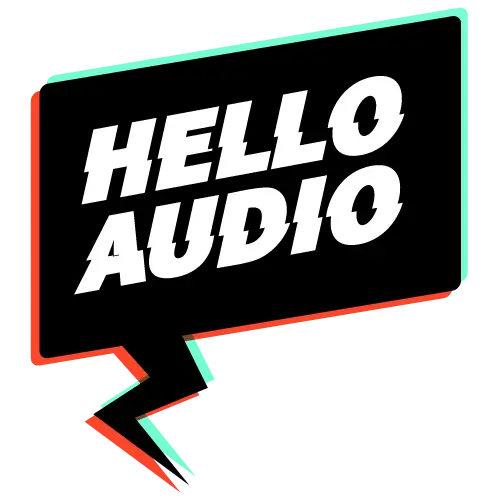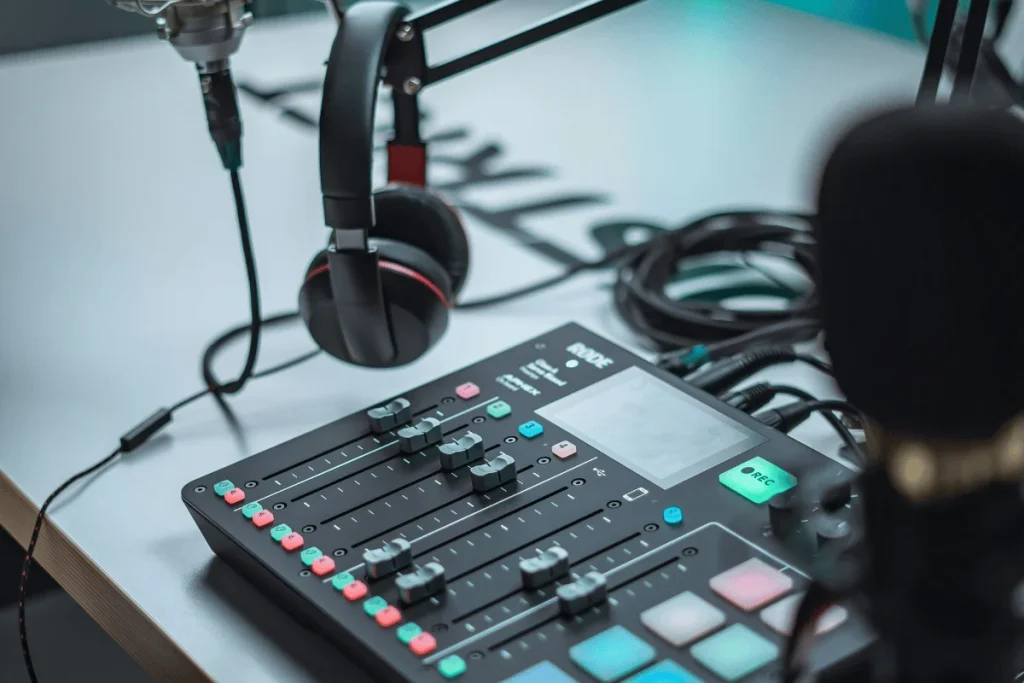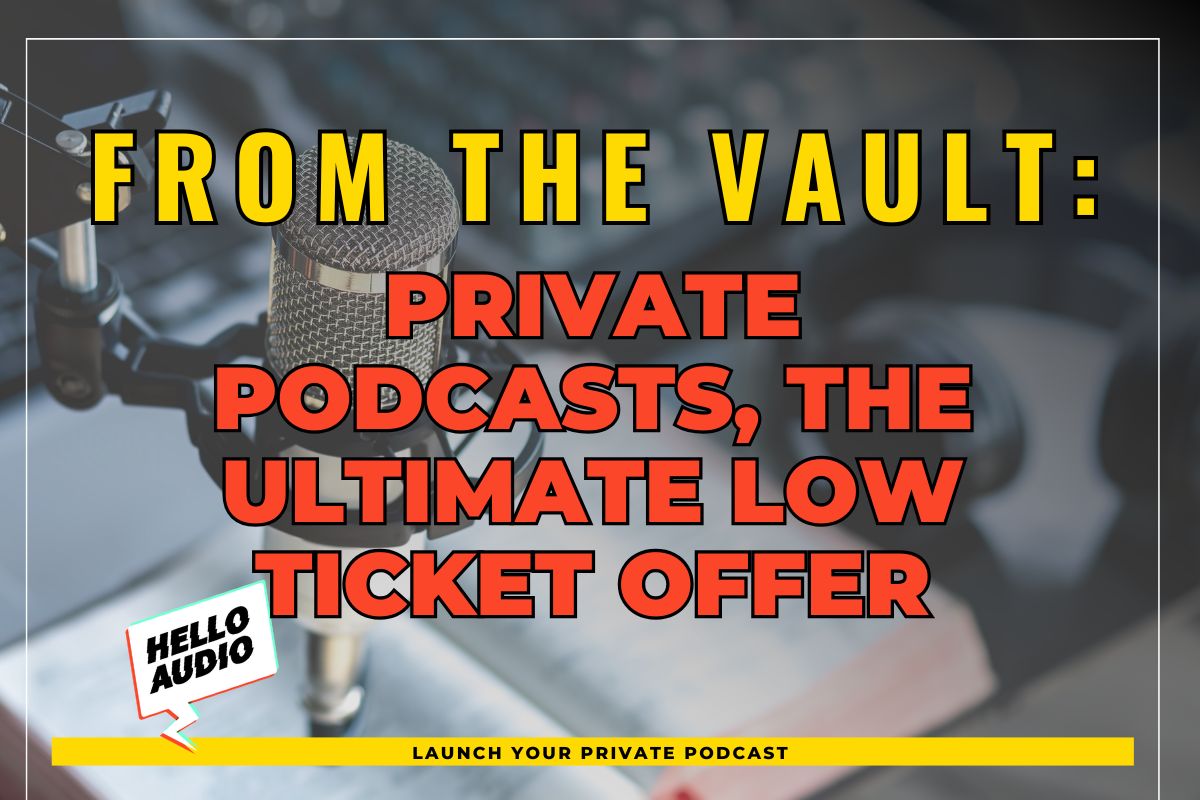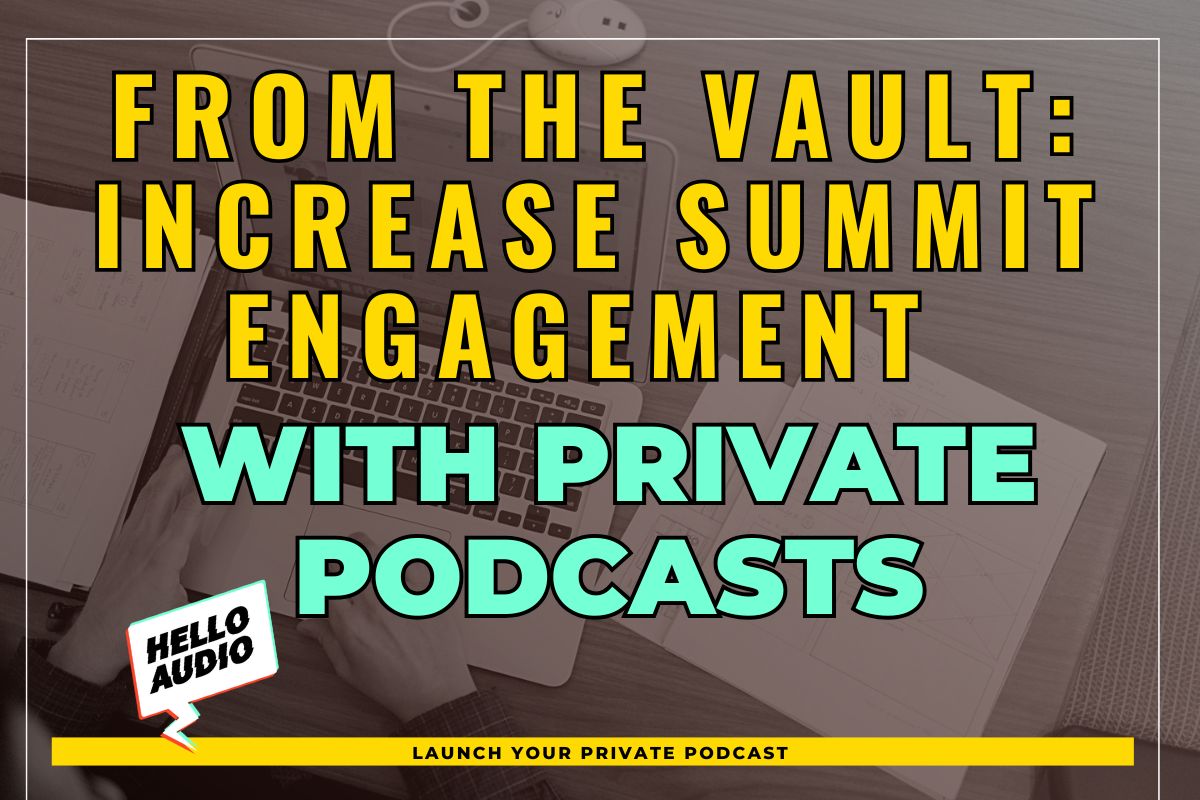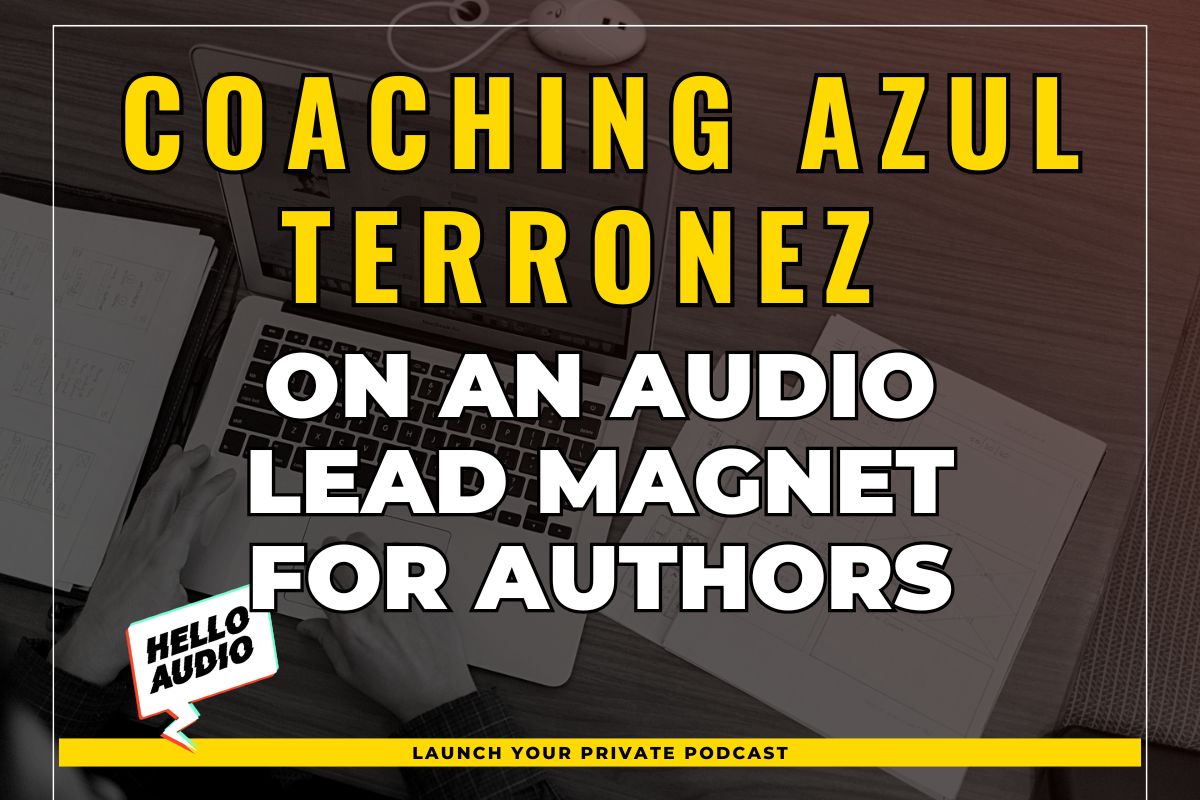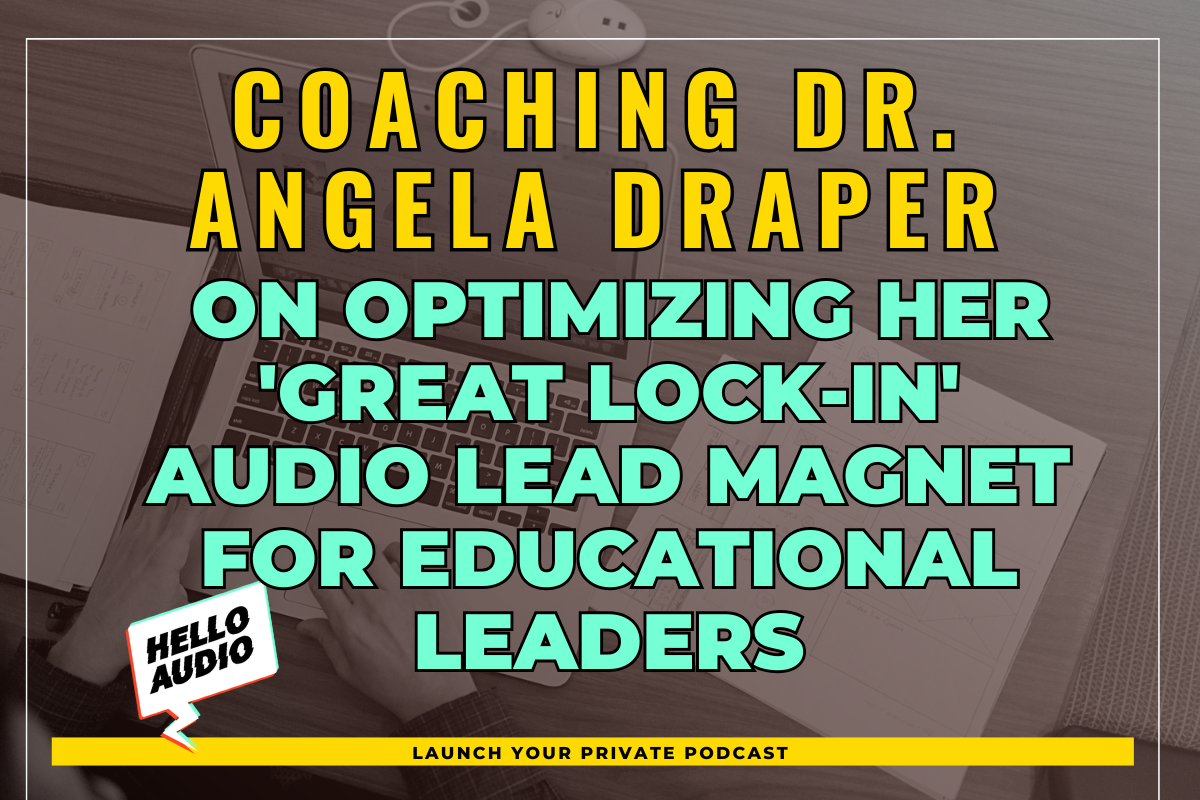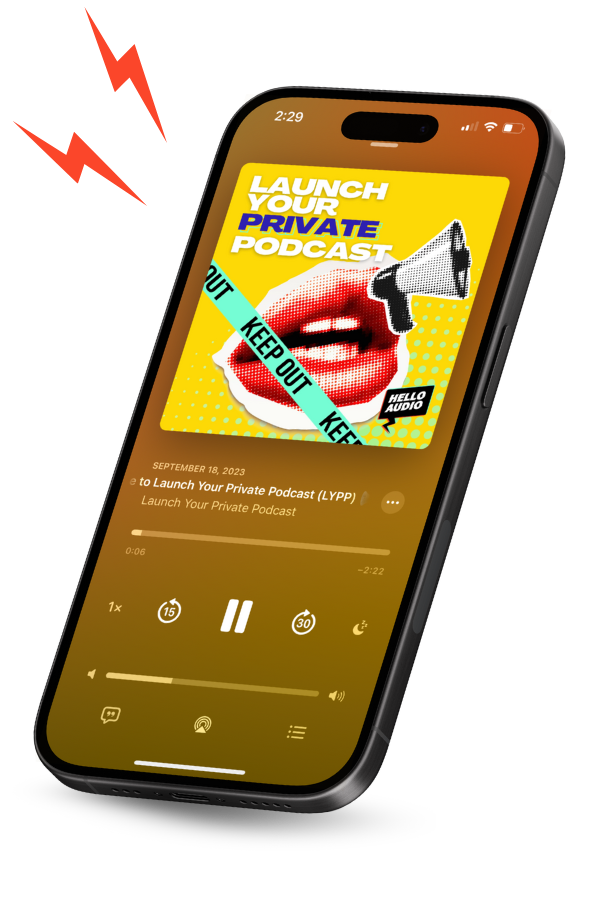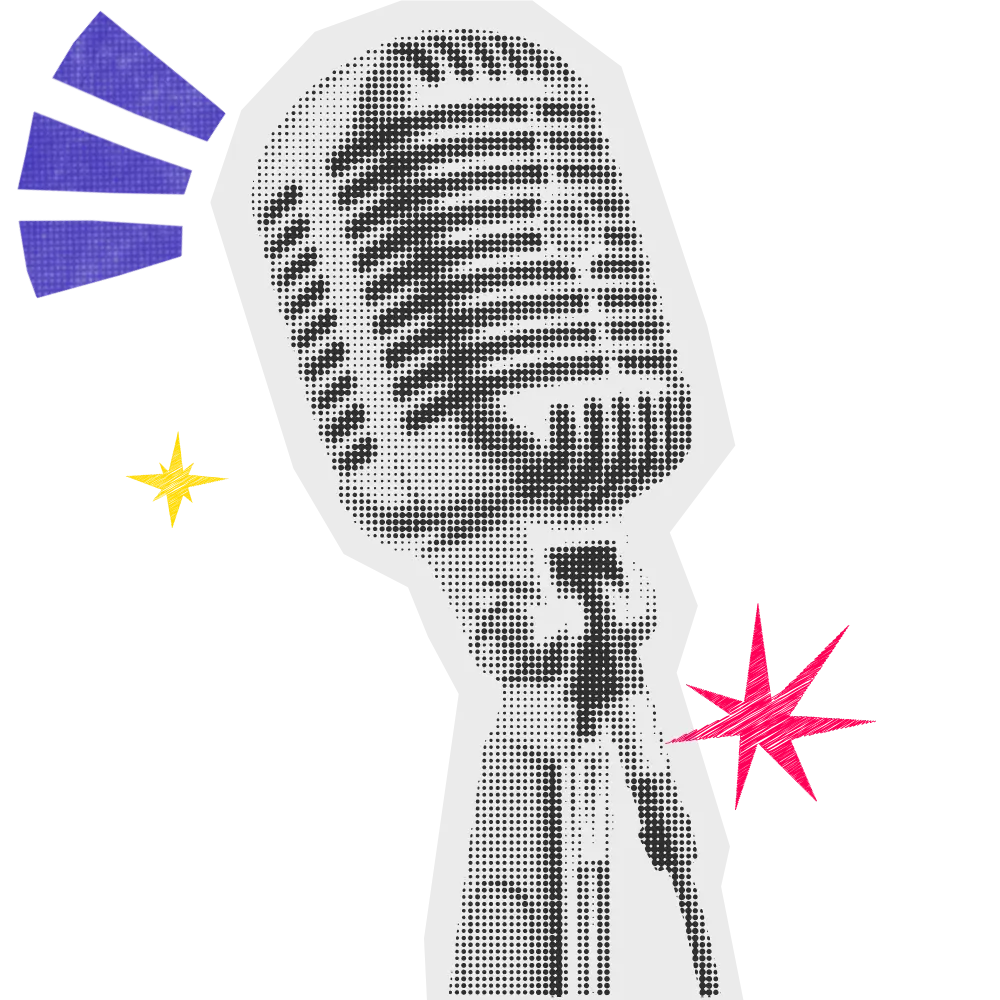Podcasting isn’t just a hobby anymore; it’s a huge media space that’s only getting bigger, with over 650 million listeners expected by 2027. Whether you want to tell stories, teach something new, make people laugh, or grow your business, there’s never been a better time to start.
However, the thing is, podcasting is more than just pressing the record button. You have to know who you’re talking to, bring something valuable, and get your show in front of the right audience.
In this blog, we’ll explore how to create a successful podcast with minimal equipment.
If you’ve got ideas or stories that matter, you belong here. Hello Audio lets you turn any recording from any existing source, be it videos, calls, or voice notes, into podcast-ready audio feeds. With personalized delivery and instant video-to-audio conversion, you can launch a professional podcast without expensive gear or editing skills.
Ready to start? Sign up today.
The Rise and Evolution of Podcasts
Podcasting started small with just a handful of tech-savvy hobbyists in the early 2000s sharing audio files through RSS feeds. The name itself came in 2004, when “iPod” met “broadcast,” and by 2005, Apple had integrated podcasts into iTunes, making them easy for anyone to discover and download.
That’s when things took off.
Throughout the 2010s, podcast networks like Gimlet and Earwolf brought better production, broader topics, and more ambitious storytelling.
Spotify’s major investments in 2019 signaled the medium’s shift from indie to industry. Since then, podcasting has exploded, not just in content but in revenue, with advertising revenue hitting billions thanks to smart targeting and loyal audiences.
Today, there’s a podcast for just about everything. And with new tools making production more accessible, the space is wide open for anyone with something to say.
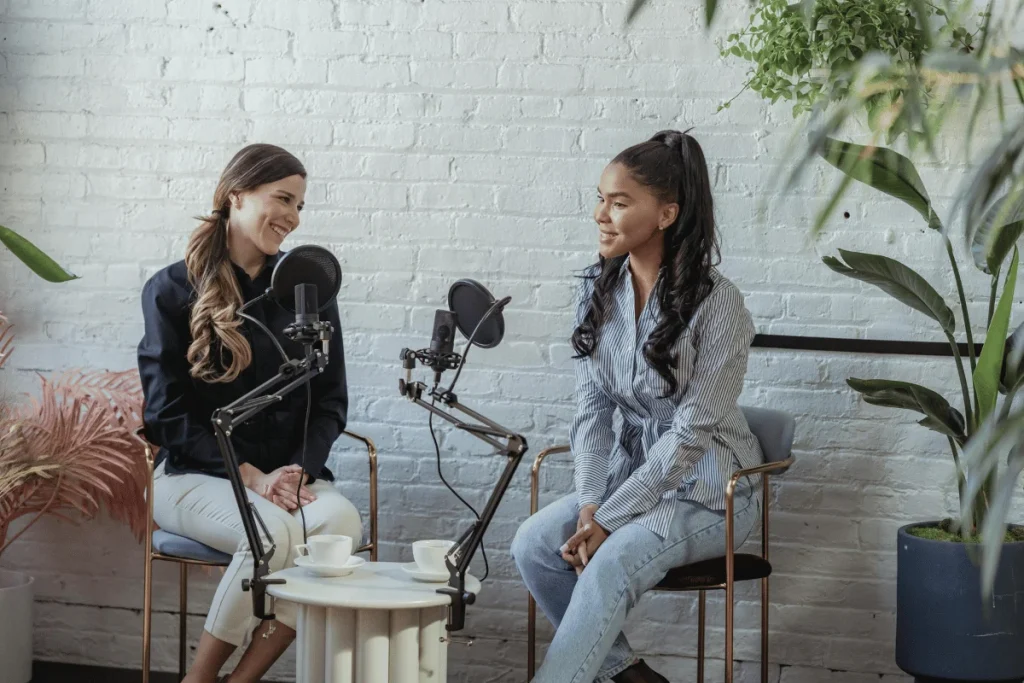
Benefits of Starting a Podcast
Starting a podcast can expand your reach, strengthen your brand, and open doors to new opportunities.
Here are a few of the biggest benefits:
- Reach a Global Audience: Your podcast isn’t limited by geography. Even niche shows can attract listeners from around the world, without competing with social media algorithms.
- Low Barrier to Entry: You don’t need a fancy studio or a big budget. A good mic, basic editing software, and a clear concept are enough to get started.
- Long-Form Storytelling: Unlike short-form content, podcasts let you explore topics in depth, tell richer stories, and give more value to your audience.
- Build Authority and Trust: Sharing your insights consistently positions you as a credible voice in your field, helping you earn loyalty over time.
- Monetization Opportunities: Once you’ve built an audience, you can turn your podcast into revenue through sponsorships, ads, paid subscriptions, or even branded merchandise.
- Evergreen Content: Episodes stay online indefinitely, continuing to attract new listeners and generate leads long after release.
- Online Community Building: Regularly posting will help create a personal connection. Listeners will get to know your voice, your style, and your perspective, turning casual followers into loyal fans.

How to Create a Successful Podcast
A great podcast isn’t about expensive gear, it’s about direction. The most successful shows have a clear theme, quality sound, and an intentional way of connecting with their audience.
Here’s how to set yourself up for success:
- Define Your Niche and Audience: Don’t try to appeal to everyone. Pick a topic you know well – one that has demand but isn’t overcrowded. Then tailor your content to the interests, needs, and challenges of a specific listener group.
- Plan Your Content: Before you go live, sketch out your first episodes. Give each episode a solid structure, a hook to grab attention, the main content, and something for listeners to walk away with. That way, they’ll keep tuning in.
- Prioritize Audio Quality: Even without expensive gear, aim for a clean, crisp sound. Use a decent mic, record in a quiet space, and edit to remove background noise and filler words.
- Create a Consistent Schedule: Decide how often you’ll release episodes, whether it will be weekly, biweekly, or monthly, and stick to it. Consistency helps build trust and listener habits.
- Promote Beyond the Podcast Apps: Share snippets, quotes, or video clips on social media. Cross-promote with other podcasters and engage your listeners through Q&As, polls, or newsletters.
- Choose a Reliable Hosting Platform: Pick a host that offers easy distribution to platforms like Spotify, Apple Podcasts, and Google Podcasts, plus analytics so you can track performance.
- Track and Adjust: Use analytics and listener feedback to see what’s working. Adjust topics, formats, or episode length based on real data, not guesswork.
- Think Long-Term: Monetization, brand building, or community growth – decide early what success looks like for you, and create with that goal in mind.
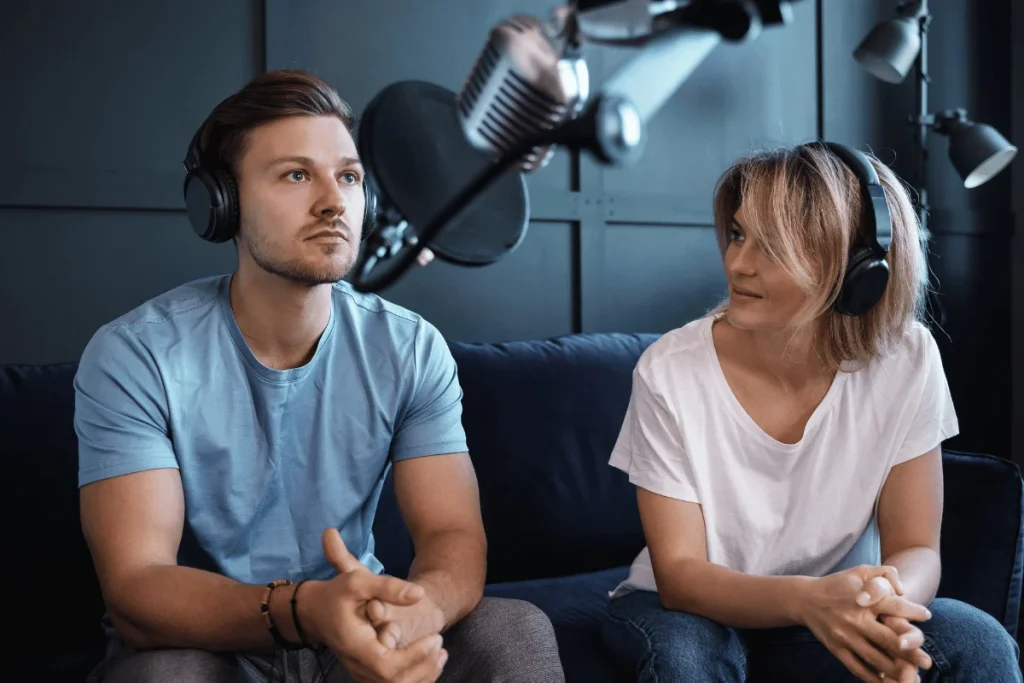
Podcast Marketing Strategies
If you want people to find your podcast, you need a marketing plan that goes beyond just uploading episodes and hoping for the best.
Here are some proven strategies to grow your audience:
- Optimize for Search: Think of podcast platforms like search engines. Use keywords in your title, episode names, and descriptions so people looking for your topic can find you. This applies to your podcast website, too. SEO can help you pull in listeners from Google.
- Share Highlights on Social Media: Instead of simply posting “New episode is out,” repurpose key moments into 30–60 second video or audio clips. Pair them with captions that spark curiosity, then post on platforms where your audience already spends time.
- Collaborate with Other Podcasters: Guest appearances work both ways. When you feature other hosts or appear on their shows, you tap into each other’s audiences and bring fresh perspectives to your listeners.
- Leverage Email Newsletters: Your podcast feed is great, but it’s not always enough to keep people coming back. A simple weekly or monthly email with episode links, behind-the-scenes notes, or bonus content keeps you top of mind.
- Engage Your Listeners Directly: Ask for reviews, run polls, and answer listener questions on air. When people feel like part of the conversation, they’re far more likely to recommend your podcast to others.
- Repurpose Content Across Platforms: Don’t stop at the podcast feed. Repurpose episodes into blog posts, Instagram carousels, or short clips for TikTok and YouTube. More formats mean more chances to be found.
- Tap into Relevant Communities: Look for online forums, Facebook groups, or Discord channels where your target audience hangs out. Share episodes when they’re genuinely relevant to ongoing discussions and avoid spamming.

Podcast Distribution Strategy
You need a distribution plan to make your podcast reach the right audience. And it doesn’t end with uploading to a platform; you need to make your podcast easy to find, easy to listen to, and available wherever your audience already spends time.
Here are some simple ways to make sure your podcast gets discovered and heard:
Publish on Multiple Platforms
Don’t rely on a single podcast directory. Upload your show to all the major players like Apple Podcasts, Spotify, and Google Podcasts. These platforms already have huge built-in audiences and recommendation algorithms that can work in your favor.
Also, adding your show to smaller, niche directories like Overcast or Pocket Casts can help you reach listeners who are more engaged and loyal.
Create a Home Base for Your Podcast
Your own website should be the central hub for your show. Host episodes there along with show notes, transcripts, and links to subscribe.
Not only does this give you complete control over how your content is presented, but it also improves your search engine visibility. If someone Googles a topic you’ve covered, you want your site to show up.

Repurpose to Reach More People
A single podcast episode can fuel content for weeks.
- Break the audio into short, shareable clips for social media.
- Pull out memorable quotes and turn them into graphics.
- Use your transcript to create blog posts or email newsletters.
This way, you’re reaching people who prefer different formats while driving them back to the full episode.
Enable Easy Sharing
Make it simple for listeners to share episodes with their friends. Add one-click share buttons on your website and include direct episode links in your show notes.
Word of mouth is one of the strongest growth drivers, but only if you make it effortless for people to spread the word.
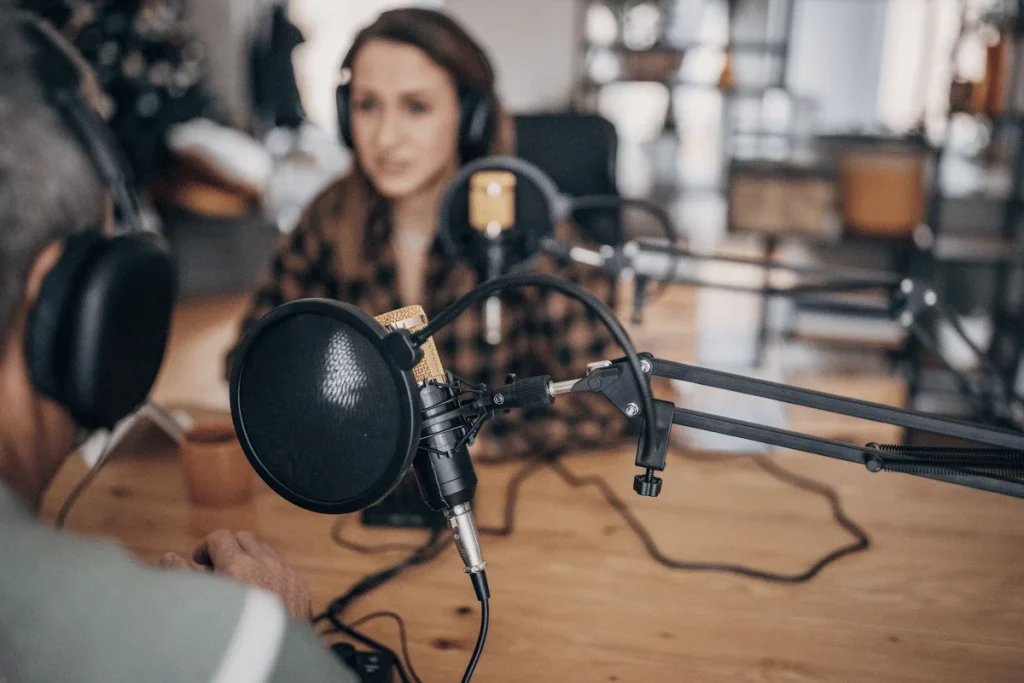
How to Grow Your Podcast Audience
Growing a podcast audience is about making sure the right people can find, connect with, and stick around for your content.
Here’s how to do it:
1. Know Your Listener Before You Hit Record
Before you even launch, define exactly who you’re creating this show for. Build a listener persona, including age, location, interests, job type, and the problem or curiosity your podcast addresses.
The more specific you are, the easier it’ll be to shape your podcast name, artwork, tone, and topics so they feel tailor-made for that audience.
2. Prep for a Strong Launch
Don’t publish your first episode in isolation. Record and upload a string of 5–10 episodes so new listeners can binge from day one.
A fuller library makes your podcast feel established and worth subscribing to.

3. Create and Control Your Podcast Website
A dedicated podcast website (or at least a strong landing page) gives you a space you fully own.
It’s where you can:
- Embed episode players
- Publish show notes and transcripts
- Offer email newsletter sign-ups
- Repurpose podcast episodes into blog posts for SEO
Make it mobile-friendly and frictionless for visitors to subscribe. Think of it as your conversion funnel, from casual site visitor to loyal listener.
4. Get Listed Everywhere (RSS Feed Required)
An RSS feed is the backbone of podcast distribution; it’s how platforms like Apple Podcasts, Spotify, and Google Podcasts automatically pull in your new episodes.
Submit your show to every major directory and player, not just one or two. Each listing is another doorway for new listeners to find you.
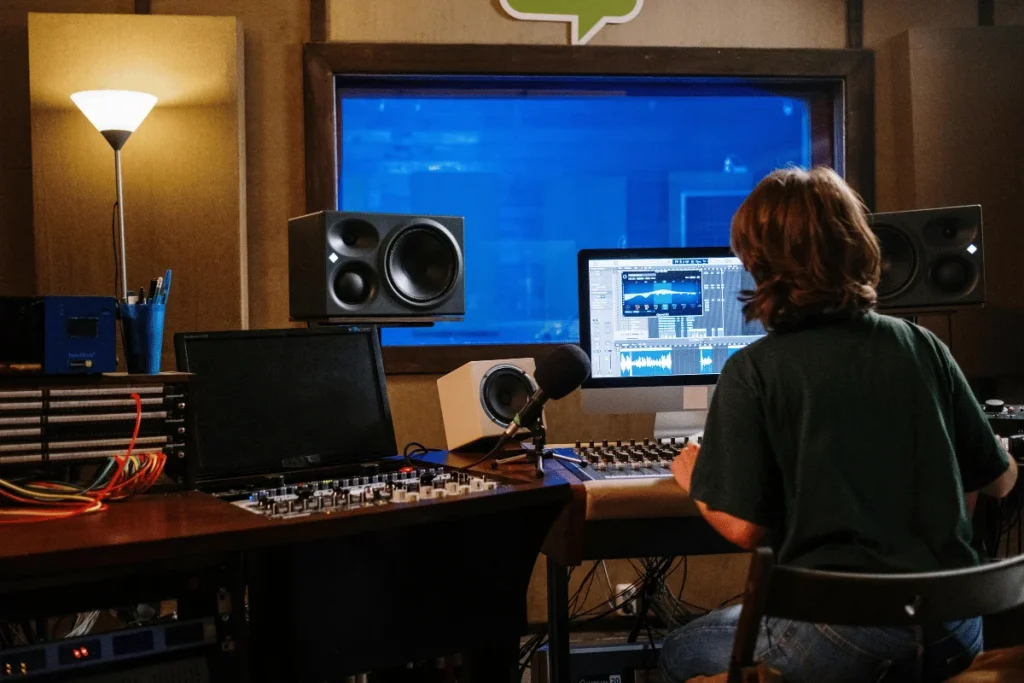
5. Build Calls-to-Action into Every Episode
Never assume listeners will automatically take the next step.
Whether it’s subscribing, leaving a review, joining a Facebook group, or following on social, tell them exactly what you’d like them to do and make it sound easy.
6. Make Search Work for You (Podcast SEO)
Think of podcast platforms like search engines. Use keywords that matter in your show description, episode titles, and notes. Combine broad terms with specific ones to catch both general and targeted listeners.
In your notes, write clear, enticing summaries and include any resources mentioned in the episode. On your website, expand episodes into blog posts to tap into Google’s search traffic and provide deeper value.
7. Use Video to Stand Out
Even if your main content is audio, recording video while you podcast gives you assets for YouTube and social media clips.
YouTube is the second-largest search engine in the world, and being there can put you in front of a whole new audience.
8. Create a Repeatable Promotion Process
Marketing shouldn’t feel like reinventing the wheel every week. Build a post-production checklist – blog post, social posts, email to your list, press kit to guests – so every episode gets consistent exposure without draining your time.
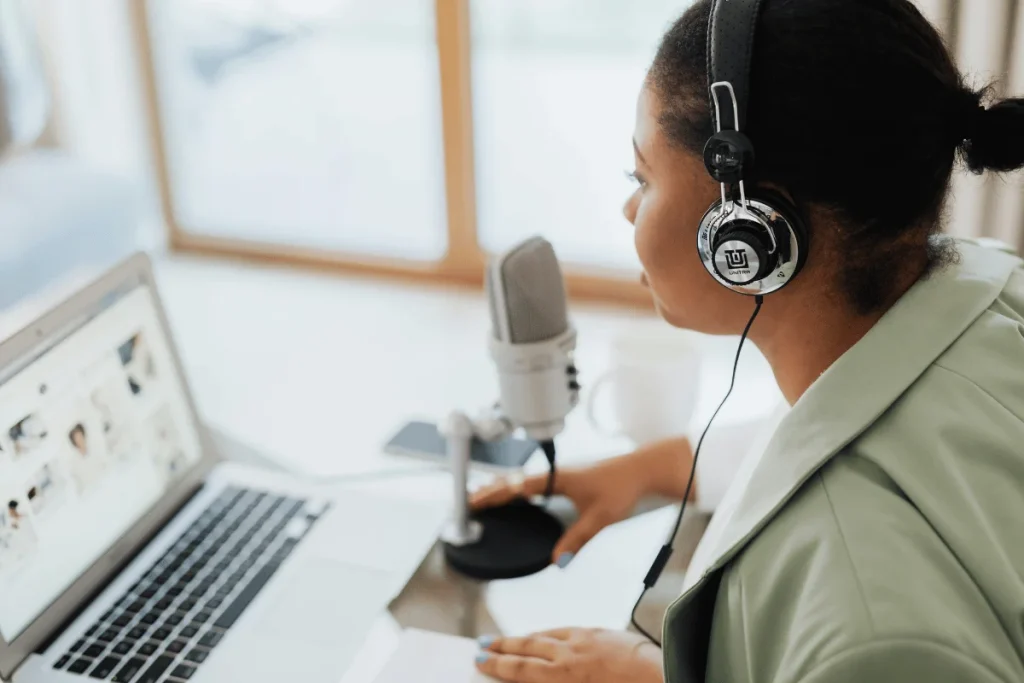
Podcast Monetization Strategies
Podcast monetization is less about one big trick and more about building multiple, aligned revenue streams. Pick a few that match your audience size and brand, do them consistently, and keep value front and center.
Below are the options that work, with quick notes on when each one makes sense:
Donations and Direct Support
Ask listeners to support the show via PayPal, Stripe, Buy Me a Coffee, or a donation page on your site. Keep the ask authentic and transparent, tell people what their money funds (better equipment, guest fees, more episodes).
Small, regular contributions from dedicated fans add up over time.
Paid Memberships and Subscriptions
Offer a membership tier for extras: bonus episodes, early access, ad-free feeds, private communities, or exclusive Q&As.
Use Patreon, Supercast, Memberful, or your own paywall. Structure tiers so they feel worth the price and don’t cannibalize your main feed.
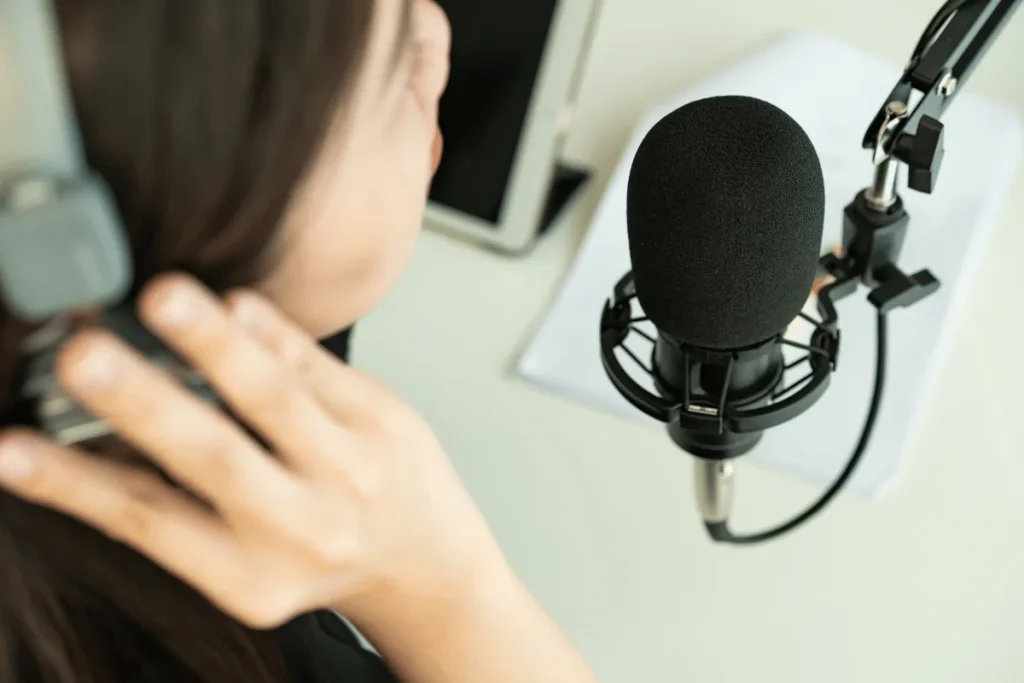
Sponsorships and Host-Read Ads
Sell pre-, mid-, or post-roll spots to brands that match your audience.
Host-read endorsements tend to perform better because they feel personal. Start with niche or local sponsors and scale as your download numbers grow.
Repurpose and Productize
Turn transcripts and episode themes into e-books, guides, courses, or downloadable kits.
Package related episodes into a paid anthology or sell instructional material that expands on your show’s topics.
Affiliate Marketing
Recommend products you trust and use affiliate links. It’s low-friction revenue when the product fits your audience.
Remember: Always disclose affiliate relationships to keep trust intact.
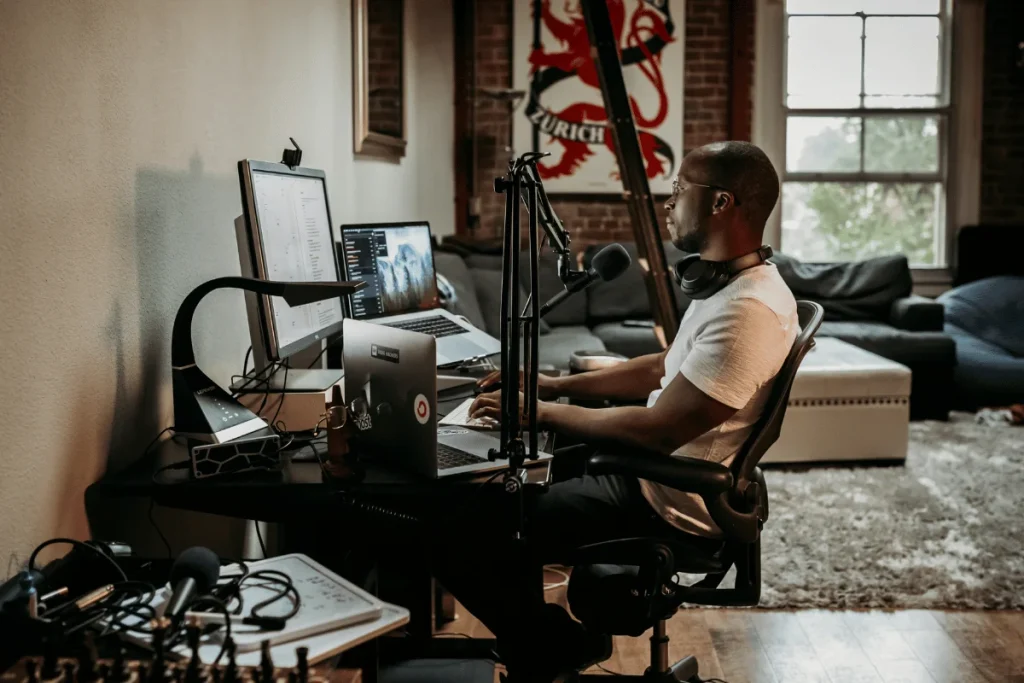
Merch and Physical Products
Sell branded merch, books, or course bundles. These products earn money and also turn listeners into walking promotions.
You can use print-on-demand to avoid inventory headaches early on.
How Long Does It Take for a Podcast to Make Money?
On average, expect 6 to 18 months before a podcast starts earning real revenue. The timeline depends on your niche, audience size, monetization method, episode quality, and how well you promote it.
A highly engaged small audience can monetize faster than a large but passive one, especially if you use targeted ads, memberships, or sponsorships. Viral moments or strong endorsements can speed things up, but for most creators, it’s a gradual build.
Focus on building trust and delivering value first; the money will come once listeners are invested in your show.
For a deeper understanding, check out our full guide on how long it takes to monetize a podcast.
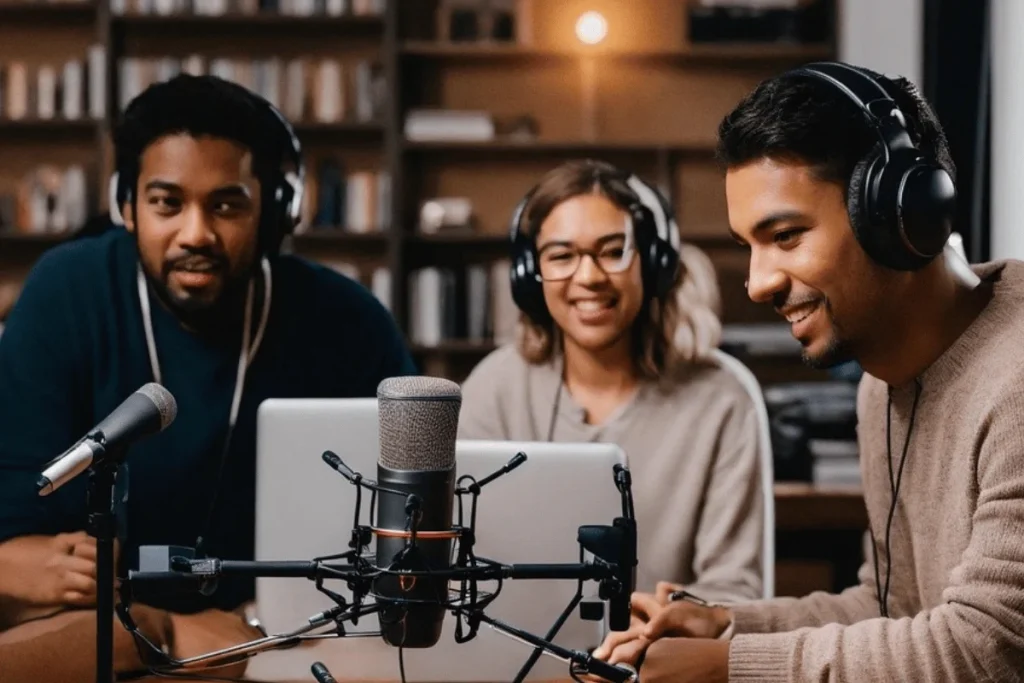
How Hello Audio Can Help You
Starting a podcast doesn’t have to mean buying expensive gear, editing for hours, or wrestling with complicated software. What matters most is getting your voice out there and making it easy for people to listen. Hello Audio helps you do exactly that, from day one.
Here’s how it can take you from idea to audience without the overwhelm:
- Turn Any Content Into a Podcast: Have videos, Zoom calls, or voice memos? Drag and drop them into Hello Audio, and our platform automatically converts them into podcast-ready audio without any editing headaches.
- Instant Distribution: Create a private or public feed and make your show available on popular podcast apps like Apple Podcasts and Google Podcasts with just a couple of clicks.
- No Fancy Setup Needed: Your audience can start listening in two clicks. No confusing logins, no file downloads, just your content delivered straight to their podcast player.
- Flexible Release Options: Drop all episodes at once for binge-listening or release them on a schedule to keep listeners coming back.
- Built-In Promotion Tools: With a landing page, checkout, and listener analytics included, you can start promoting your podcast and growing your audience without paying for extra platforms.
- Personalized Listening Experiences: Add dynamic intros and outros so every listener hears the most relevant updates, promotions, or calls to action.
For beginners, the hardest part of podcasting is figuring out how to get your show into people’s ears and keep them coming back. Hello Audio removes that barrier so you can focus on creating content that connects.
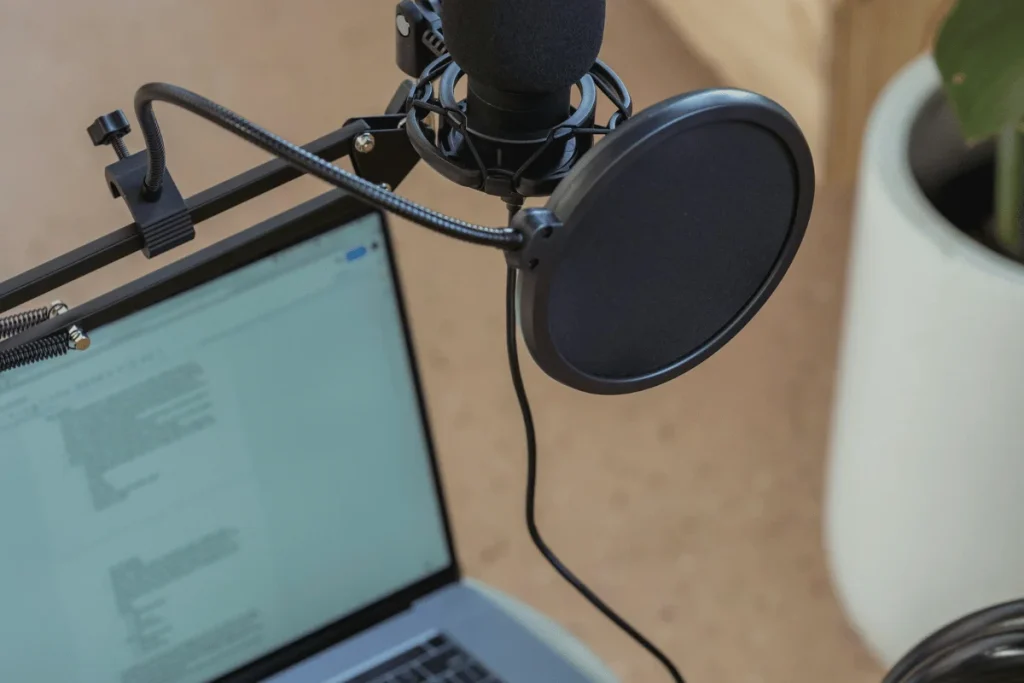
Frequently Asked Questions (FAQs)
More doubts about podcasting? Here are some commonly asked questions:
How Long Should a Podcast Be?
There’s no magic number, but the sweet spot is usually ‘long enough to cover your topic without drifting into fluff.’
For many shows, that’s somewhere between 20 and 40 minutes. If you can keep listeners engaged, length matters less than pacing.
What’s the Best File Format for Podcast Uploads?
MP3 is the standard for podcasting. It’s supported everywhere, keeps file sizes small, and still delivers strong audio quality. Formats like WAV or FLAC sound great but are too large for smooth streaming and downloads.
How Do I Choose the Right Episode Titles?
Think from your listener’s perspective. Write titles your audience will instantly understand. Make the topic clear, include keywords they’d actually type into search, and avoid clickbait. Specific and straightforward works better than clever but vague.
Conclusion
Launching a successful podcast is a long-term commitment to your audience. The key is having clarity: know your niche, deliver high-quality content, promote it where your listeners are, and track what’s working.
With the right strategy, you can grow from zero listeners to a loyal community, and eventually, a steady source of income.
The tools and opportunities are already out there; you just need to start, stay consistent, and let your voice find its place in someone’s playlist.
Want to turn this playbook into action?
Hello Audio can help. We make repurposing, uploading, and distributing your show simple, so you can focus on growing your audience instead of wrestling with software.
If you’re ready to share your voice, start your free 7-day trial today and get your podcast out into the world.

